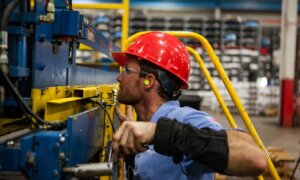Scientists at the U.S Army Research Laboratory are working on improving the rate of learning for soldiers. Their aim is to help soldiers more quickly decipher pieces of information and deploy solutions based on that information. Recognizing threats like IEDs (improvised explosive device) or focusing on possible danger zones from aerial war zone images are just two of the things the soldiers would get training for.
Researchers used a low-cost, lightweight hardware implemented with collaborative filtering. A common machine learning technique, collaborative filtering is the filtering of information for patterns to predict outcomes based on the discerned patterns. Using this tech, the team trained soldiers 13.3 times faster.
This speedup is crucial when compared to the alternative, an ultra-modern optimized multi-core system and its 12.7 times speedup for optimized GPU systems. It also makes for an adaptive, lightweight tactical computing system as it consumes far less power – 13.8 watts compared to the 235 for GPU platforms.
ARL researcher Dr.Rajgopal Kannan said that the technique could become embedded on the next generation of combat vehicles and would offer cognitive services for soldiers in coalition environments. This is one of the six goals of the Army Modernization Priorities and Kannan is actively collaborating with another group of researchers at the University of Southern California to optimize tactical learning applications on low-cost hardware. Kannan’s focus is on developing different techniques that would speed up the algorithms through innovative designs on inexpensive, but modern hardware.
This work is a part of the Army’s larger focus on machine learning research, specifically artificial intelligence, in order to gain strategic advantage on the battlefield. The army is looking into various applications such as tactical computing and on-field adaptive processing.
Follow TechTheLead on Google News to get the news first.























